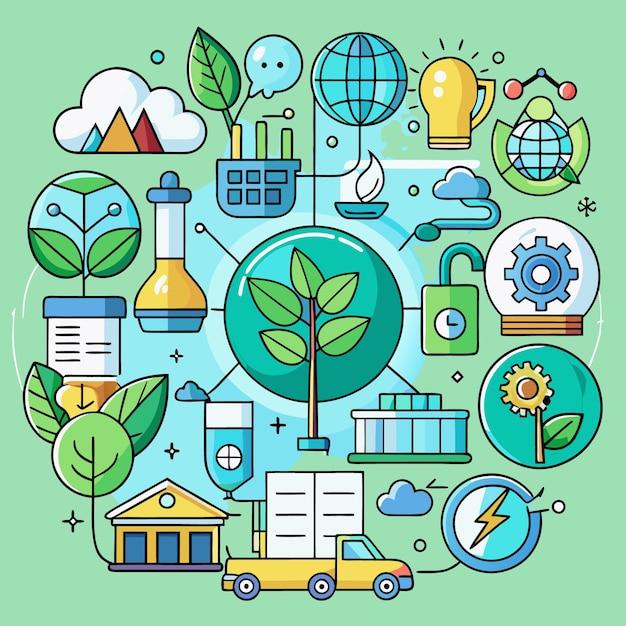Sustainable Technologies Transforming Modern Educational Settings: Innovations for a Greener Future
As environmental concerns become increasingly urgent, education leaders worldwide are embracing sustainable technologies to reinvent their campuses and classrooms. From energy-efficient infrastructure to digital learning tools, these innovations not only reduce carbon footprints but also cultivate eco-conscious mindsets in young learners. In this article, we explore how sustainable technologies are transforming modern educational settings, examine their benefits, and provide practical tips to foster a greener future for schools and universities.
What Are Sustainable Technologies in Education?
Sustainable technologies refer to tools, systems, and practices that minimize environmental impacts while delivering high educational value. In academic environments,these innovations range from smart building systems that conserve energy,to paperless digital solutions and renewable energy installations.by implementing such technologies, educational institutions can reduce their ecological footprints while promoting environmental stewardship among students and staff.
Key Sustainable Technologies Shaping education
- Solar panels & renewable energy systems
- LED lighting & energy-efficient appliances
- Smart HVAC & automation controls
- Virtual classrooms & digital learning platforms
- Recycled and sustainable building materials
- Water-saving solutions & green landscaping
- Waste management & recycling initiatives
Benefits of Sustainable Technologies in Educational Settings
Integrating sustainability into educational environments offers wide-ranging benefits.Here’s how schools and universities benefit from embracing eco-friendly technologies:
1. Environmental Impact Reduction
- Lower energy consumption: Solar panels, smart thermostats, and LED lighting contribute to meaningful energy savings.
- Reduced waste: Digital resources and recycling programs minimize paper and plastics usage.
- Greener infrastructure: Buildings constructed with sustainable materials lower carbon emissions over their lifecycle.
2. Long-Term Cost Savings
- Decreased utility bills: Energy-efficient systems result in lower ongoing costs for heating, cooling, and electricity.
- Reduced maintenance: Durable, sustainable materials require less frequent replacement or repairs.
- Resource efficient: Automated controls optimize energy, water, and resource usage.
3.Enhanced Learning Experiences
- Tech-driven engagement: Digital platforms, AR/VR labs, and cloud-based learning enable interactive and personalized education.
- Eco-focused education: Students actively participate in sustainability efforts, learning valuable responsible citizenship skills.
- Healthy environments: Improved air quality and natural lighting create more productive, cozy learning spaces.
Real-world Case Studies: Sustainability in action
Let’s look at how leading educational institutions are leveraging sustainable technologies for a greener future:
Stanford University: Campus-Wide Solar Power
Stanford installed solar panels across campus roofs, meeting nearly half its annual electricity needs with renewable energy.Automated lighting and temperature systems further shrink the campus’s carbon footprint, proving that large-scale investments in sustainability pay off.
Green School Bali: Architecture and Curriculum
This K-12 school in Indonesia is built almost entirely of bamboo and other sustainable materials. The campus uses compost toilets, solar panels, and hydro-turbines to minimize waste and maximize energy efficiency while integrating environmental stewardship deeply into its curriculum.
Fayetteville Schools, Arkansas: LED Lighting Retrofits
The district upgraded over 70% of its lighting systems to LEDs, drastically cutting electricity usage and saving on maintenance costs. Students learned about energy-saving technology firsthand, sparking enthusiasm for sustainability initiatives elsewhere on campus.
Practical Tips for Implementing Sustainable Technologies
If you’re considering introducing sustainable technologies in your educational setting, here are practical steps to get started:
assess Your Campus Needs
- Conduct an energy audit to identify inefficiencies.
- Survey staff and students for sustainability priorities.
Set Clear Sustainability Goals
- Establish targets for energy, water, and waste reduction.
- Create milestones for renewable energy adoption and digital learning transitions.
Choose the Right Technologies
- Prioritize cost-effective solutions like LED lighting and smart thermostats.
- Invest in scalable digital learning platforms with paperless resources.
- Consider solar or wind power installations where feasible.
Engage the Community
- Host workshops and sustainability fairs.
- Form “green teams” made up of students,teachers,and staff to champion eco-friendly initiatives.
- Share progress and challenges regularly with the school community.
Monitor Progress and Celebrate Successes
- Track cost and energy savings using dashboards or apps.
- Recognise achievements with awards, newsletters, or party events.
First-Hand Experience: Voices from the Field
“When we switched to digital homework and smartboards, we saw a 40% decrease in paper waste. But the greatest impact was seeing how environmental awareness became second nature to our students. Going green changed more than our processes – it changed our mindset.”
— Sarah Kim, Principal, Urban Green Middle school
Numerous educators and students report increased engagement and satisfaction in green learning environments. Whether through hands-on care for a campus garden or coding projects that track energy usage, first-hand involvement with sustainable technology deepens understanding and agency.
Future Trends: Innovations on the Horizon
As sustainable technology evolves, the next wave of innovations promises even greater environmental and educational benefits:
- AI-powered energy management: Advanced algorithms optimize resource usage in real time.
- Smart classrooms: IoT sensors adjust lighting, temperature, and air quality for maximum efficiency.
- Interactive AR/VR for eco-literacy: Immersive learning experiences teach sustainability concepts in engaging ways.
- Blockchain for supply chain transparency: Schools track the sustainability of resources and equipment through secure, verifiable data.
Conclusion: Building a Greener Educational Future
Sustainable technologies are vital to transforming modern educational settings into hubs of innovation, conservation, and social responsibility. By investing in renewable energy,digital learning,and eco-friendly infrastructure,educational leaders inspire the next generation to live and learn sustainably. The shift to green campuses and classrooms is more than a trend—it’s a necessary evolution for the well-being of people and the planet.
Whether you’re a school administrator, teacher, student, or parent, exploring and advocating for sustainable technologies is a powerful step toward a greener future in education. For more detailed insights and updates on integrating sustainability in learning environments, bookmark our site and join the conversation!

